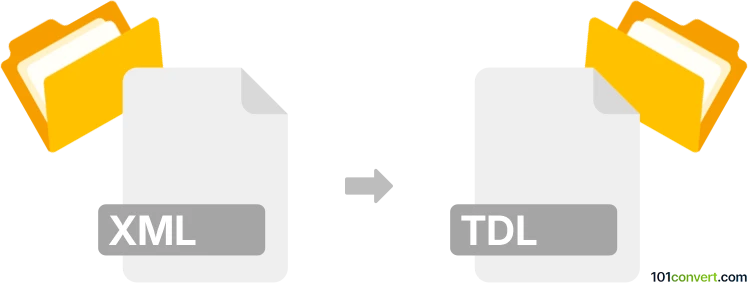Convert XML to TDL
How to convert XML files to TDL for Tally ERP, including tools, workflow, and best practices.

How to convert xml to tdl file
- Other formats
- No ratings yet.
101convert.com assistant bot
3h
Understanding XML and TDL file formats
XML (eXtensible Markup Language) is a widely used markup language designed to store and transport data in a structured, human-readable, and machine-readable format. It is commonly used for data interchange between systems, configuration files, and web services.
TDL (Tally Definition Language) is a proprietary language used by Tally accounting software. TDL files define customizations, reports, and extensions for Tally ERP, allowing users to tailor the software to their business needs. TDL files are text-based and follow a specific syntax understood by Tally.
Why convert XML to TDL?
Converting XML to TDL is often necessary when you want to import structured data (such as invoices, ledgers, or inventory) from an external system into Tally ERP. Since Tally does not natively import XML, the data must be transformed into TDL scripts or templates that Tally can process.
How to convert XML to TDL
There is no direct, universal converter for XML to TDL due to the custom nature of TDL scripts and the variability of XML data structures. The conversion typically involves mapping XML elements to TDL definitions and writing TDL code that reads or imports the data.
Here are the general steps:
- Analyze your XML file structure and identify the data you need to import.
- Design the corresponding TDL structure (such as voucher, ledger, or report definitions).
- Write a script or use a tool to parse the XML and generate TDL code or data blocks.
- Test the generated TDL in Tally ERP to ensure correct data import and formatting.
Best software and tools for XML to TDL conversion
Manual conversion is often required, but you can use the following tools to assist:
- Notepad++ or Sublime Text: For editing and scripting both XML and TDL files.
- Custom scripts in Python or Java: Use libraries like xml.etree.ElementTree (Python) to parse XML and generate TDL code.
- Tally's TDL Developer: For writing and testing TDL scripts within the Tally environment.
- Third-party Tally integration tools: Some companies offer custom solutions for XML to TDL conversion, such as TDLGen or TDL Converter (availability may vary).
For most users, the best approach is to use a combination of a scripting language (like Python) to automate the XML parsing and TDL code generation, then test and refine the output in Tally's TDL Developer.
Example workflow using Python and Tally
- Open your XML file in a text editor.
- Write a Python script to extract relevant data and format it as TDL code.
- Save the output as a .tdl file.
- In Tally, go to Gateway of Tally → F12: Configure → Product & Features → Manage Local TDLs and load your TDL file.
- Verify the imported data or customization in Tally.
Conclusion
Converting XML to TDL requires understanding both file formats and may involve custom scripting. While there is no one-click solution, using text editors, scripting languages, and Tally's own tools can streamline the process and ensure accurate data import or customization.
Note: This xml to tdl conversion record is incomplete, must be verified, and may contain inaccuracies. Please vote below whether you found this information helpful or not.